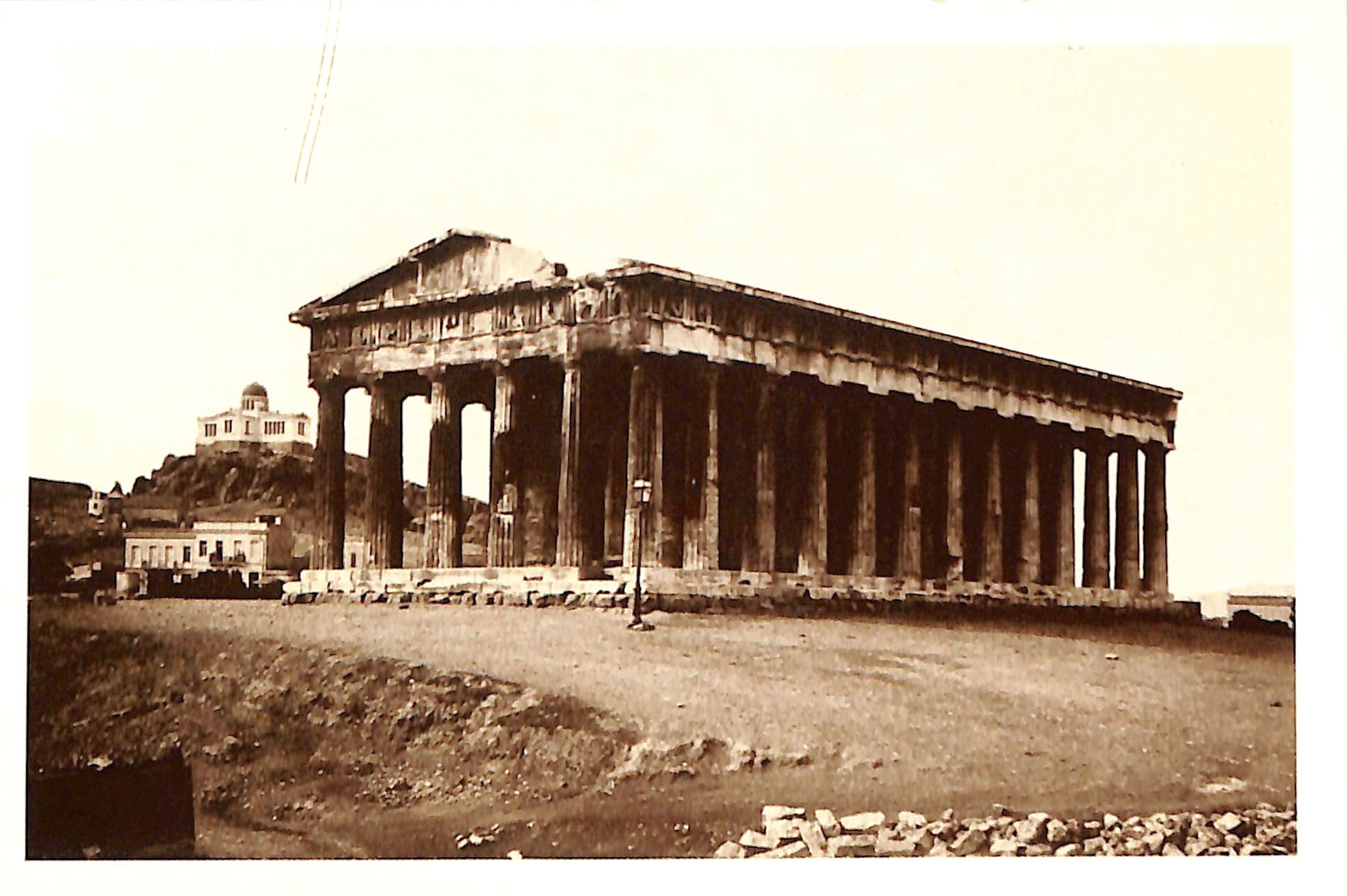
The temple of Hephaestus and Athena Ergane in Athens (Hephaisteion or "Theseion"
4/29/2025 10:01:36 AM
The temple of Hephaestus and Athena Ergane in Athens (Hephaisteion or "Theseion"
The temple of Hephaestus, or "Theseion," is located on the hill of the Agora of Athens, specifically at the Agoraios Kolonos. It is one of the best-preserved temples, likely due to its conversion into a church. According to Pausanias (I.14.5-6), the temple honored Hephaestus, the protector of metalworkers, and Athena Ergane, the protector of potters. The construction of the temple took place between 460-420 BC. It featured a pronaos and an opisthodomos, with two columns in antis, and was surrounded externally by a peristyle, a Doric colonnade with 6 columns on the short sides and 13 on the long sides. The building was constructed from Pentelic marble, while the architectural sculptures that adorned it were made from Parian marble. The temple featured an extensive sculptural decoration. Of particular interest among the architectural sculptures are the metopes, which adorned the eastern side of the peristyle and depicted the twelve labors of Heracles. Following these, on the north and south sides, scenes from four of the labors of Theseus were depicted, which led to the temple being called the "Theseion." In the 7th century AD, the temple was converted into a church dedicated to Saint George of Akama and functioned as such until the liberation of Greece from the Turks. During the 18th century, several prominent Protestants who died in Athens were buried inside the building. In 1834, the ceremony welcoming King Otto was held here. Afterward, the temple functioned as an archaeological museum until the start of excavations by the American School in the Ancient Agora in 1930.
Pictured: The temple of Hephaestus and Athena Ergane (Hephaisteion or "Theseion") on the Agoraios Kolonos hill in 1878. ©Municipal Photography Museum of Kalamaria ‘Christos Kalemkeris’.

